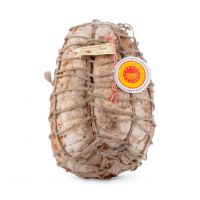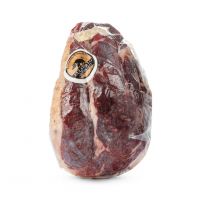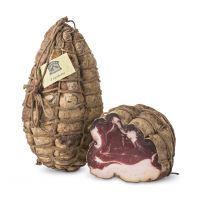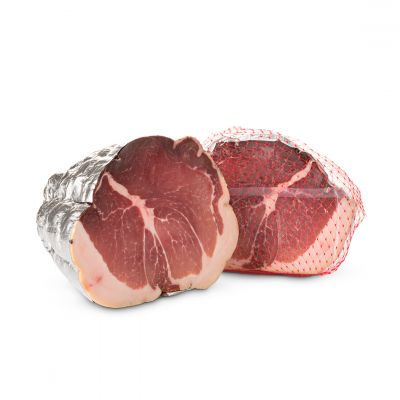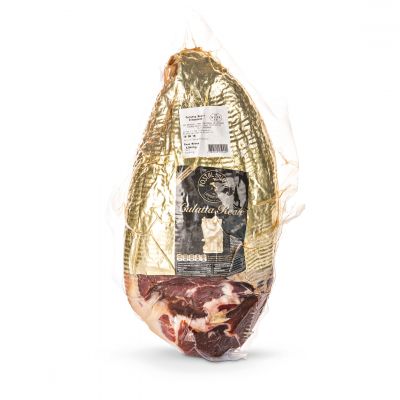
The product
Fiochetto Crocedelizia Pelato
Cured meat similar to Culatello with an elongated shape, already peeled
Code:
78407
Country of origin:
Italy - Emilia Romagna
Weight:
2,5 kg approx
Minimum order:
1 piece
| Description | Cut from the remaining part of the pig's leg after extraction of the Culatello, peeled and ready to use |
|---|---|
| Appearance | With an elongated shape, bagged in a bladder and wrapped in twine; when cut, it has a rather uniform red colour |
| Taste | Sweet and melting, with less fat than Culatello yet not drier |
| Maturing | at least 12 months |
| Curiosity | Free of chemical additives and still produced in an artisanal manner, this sausage is the ideal solution for those looking for small, high-quality charcuterie |
| Suggestions | Once opened, to prevent it from drying out, keep the sausage wrapped in a wet cloth and stored in a cool, dry place |
| Ingredients | Pork (origin: Italy), salt, wine, pepper, garlic. Does not contain gluten or milk products. |
|---|---|
| Weight | 2,5 kg approx |
| Packaging | Vacuum packed |
| Storage Conditions (packaged products) | Store at +2 °C to +7 °C |
| Country of origin of the primary ingredient | Italy |
| Nutrition Declaration | Energy: 820 kJ / 190 kcal Fat: 12,2 g of which saturates: 4,2 g Carbohydrate: 0 g of which sugars: 0 g Protein: 19 g Salt: 2,8 g Typical value per 100 g |
The producer
Crocedelizia - Soragna (PR) - Emilia Romagna
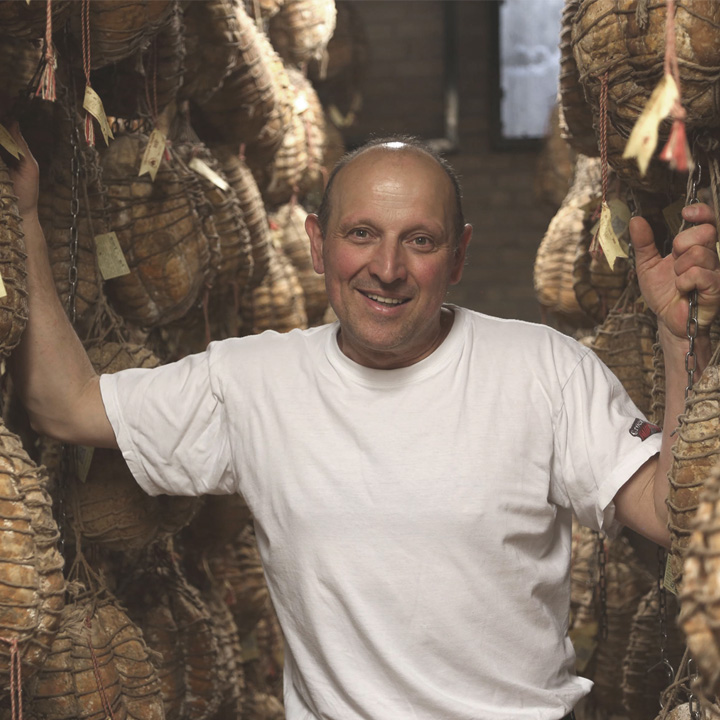
Why we chose them
The history of Crocedelizia is the story of family Carraglia that renews the handcraft tradition of the norcinis of Bassa Parmense area, preserving the
knowledge and the taste of local charchuterie.
Heirs of the ancient profession of "masalen" - people who used to raise pigs and transform the meat in the ancient farmhouses of Bassa Parmense
area -. Ernestino Carraglia founded his laboratory in Soragna, in the province of Parma, to produce and mature the most typical salumi of Parma area,
like Culatello and Spalla Cotta.
Ernestino works according his long family tradition and matures his products in a cellar made with terracotta red bricks under the laboratory.
When we visited him, Ernestino told us some of the differences among the small producers like him and the industrial producers. One of these
particularly impressed us: Ernestino need to buy the whole mezzena and use all the meat, as in the past, with no waste, whereas big producers buy
just the cuts they need e.g. for Culatello. A choice that goes also in the direction of sustainability. One more reason, for us, to support the handcraft
job of small artisans like Ernestino.
From the same producer

